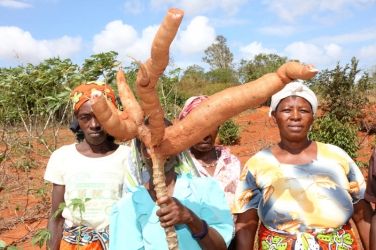×
The Standard e-Paper
Informed Minds Prefer The Standard

Amani Wajane Women Group from Mande village in Vitengeni within Kilifi County display cassava roots after uprooting it from the ground in one of their demonstration farm.
(PHOTO: GIDEON MAUNDU/STANDARD)